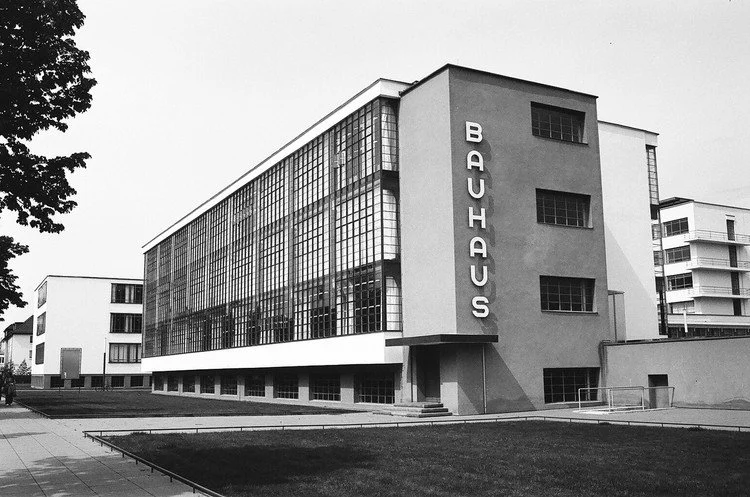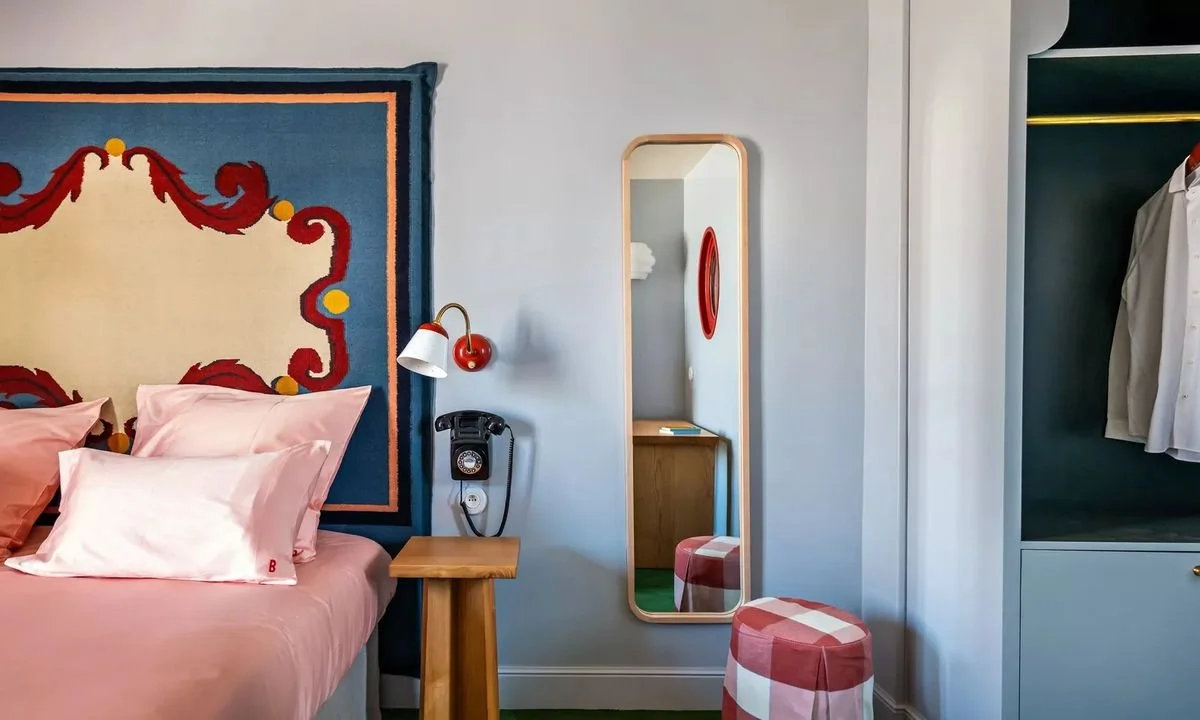What Modern Really Means: A Crash Course in 20th Century Design Furniture
In today’s vernacular, “modern furniture” is often assumed to mean anything that looks sleek, clean, and newly made. But in design history, Modern (with a capital M) refers to a distinct movement that took shape between the 1920s and the 1970s. It’s not just a look—it’s an ideology born from cultural rupture, industrial advancement, and a completely reimagined way of living.
To understand it, though, we have to rewind—way back.
From Handcrafted to Machine Made: The Roots of Modernism
Modern design is inseparable from the Industrial Revolution, which began in the late 18th century and ushered in one of the most significant shifts in human history. Agriculture gave way to industry. Inventions like the cotton gin, the steam engine, the power loom, and even gas lighting transformed how people lived, worked, and built things. Mass production made goods more affordable and accessible, but it also distanced people from the craftsmanship and soul of handmade design.
Furniture before this period was ornate, expensive, and designed only for the wealthy. As mass production rose, so did the middle class—and with it, demand for accessible furnishings. What followed was the Victorian era, a blend of historic revival styles—Rococo, Gothic, Renaissance—all jumbled together in a machine-made frenzy. Design became more accessible, yes, but often lost its refinement.
Victorian Era Living Room Design
The Pushback: Art Nouveau and Organic Inspiration
By the late 19th century, people had grown weary of industrial excess and aesthetic chaos. Enter Art Nouveau: a rebellion against the stiff, historical motifs of the Victorian age. Its flowing lines, organic forms, and handcrafted ideals were deeply human in nature—a reaction to the mechanical and the uniform.
In Paris, this spirit came to life in Hector Guimard’s Paris Metro entrances. In the U.S., we see it in Louis Comfort Tiffany’s stained glass lamps. Art Nouveau was about honoring nature and returning to something intuitive, fluid, and sensual.
Architect Hector Guimard
But of course, history moves forward. And with the arrival of the 20th century—and the trauma of World War I—design changed course once again.
Modernism Emerges: Function, Form, and the Machine
Postwar Europe was fractured and eager for order. This is when we see the rise of Art Deco in France and the Bauhaus in Germany. While Deco leaned glamorous—think geometric patterns, chrome, and luxury—Bauhaus was its restrained cousin. Founded by Walter Gropius, the Bauhaus embraced simplicity, utility, and the idea that “form follows function.”
Architecture and furniture were intertwined. Le Corbusier’s “house as a machine for living” wasn’t just metaphor—it was philosophy. Designers like Marcel Breuer, Mies van der Rohe, and Florence Knoll saw furniture not as decoration, but as an essential component of daily life. Their materials—tubular steel, molded plywood, glass—spoke to industry, but their forms were graceful and intentional.
Bauhaus School Dessau, Germany 1925
Modern Chair Designs
Mid-Century America: Modernism Grows Up
When Bauhaus ideas arrived in postwar America, something shifted. Austerity gave way to warmth. Charles and Ray Eames, George Nelson, Isamu Noguchi—these designers built on modernist principles but added comfort, play, and optimism. The Eames Lounge Chair was luxurious but relaxed, like a well-worn baseball mitt. Their experiments with molded plywood (originally developed for war-time medical splints) helped bring elegant, affordable design into American homes.
Eames Lounge Chair
Companies like Herman Miller and Knoll were instrumental in scaling these ideas, and you can still find many of their classic pieces in production today.
The Scandinavian Way: Democratic Design and Nature
Across the Atlantic, the Scandinavian countries were embracing their own version of Modernism—softer, quieter, more rooted in nature. Danish designer Arne Jacobsen’s Egg Chair, Alvar Aalto’s bentwood innovations, and Helena Tynell’s softly geometric glass lights all exemplified this warm, democratic approach. These were objects meant to serve everyone—not just the elite.
The legacy lives on in brands like IKEA, but the roots go deeper than flat-pack furniture. It’s about beauty, simplicity, and utility coexisting.
Space Age & Radical Reactions
By the 1960s, new materials like plastics and resins gave rise to wild experimentation. Designers imagined the future—literally. Eero Aarnio’s Ball Chair. Verner Panton’s single-piece molded chairs. Joe Colombo’s modular living pods. It was fun, futuristic, and sometimes even inflatable.
2001: A Space Odyssey by Director Stanley Kubrik, Set Design
But the pendulum always swings. By the late 1960s, a younger generation of designers started to question the rigidity of Modernism. Movements like Italian Radical Design and Postmodernism flipped the script. Designers like Ettore Sottsass and Gaetano Pesce infused irony, humor, and critique into their work—suggesting maybe a chair didn’t need to follow function at all.
The Legacy of Modern
Despite these rebellions, the core values of Modern design endure: honesty in materials, accessibility, utility, and the idea that design has the power to shape how we live. Whether you're sitting on a vintage Eames chair or scrolling through IKEA’s website, you're engaging with ideas born from this pivotal period.
Modern furniture tells the story of an unprecedented cultural shift. It doesn't look like what came before because the 20th century didn’t either.
Where to Buy Modern Furniture in Miami & Fort Lauderdale
Pendentive Studio, MiMo District
Whether you're just beginning your collection or hunting for a specific piece of design history, South Florida is rich with incredible vintage and Modern furniture dealers. Here are a few of our favorite spots:
In Miami:
Pendentive Studio – Our curated showroom in the MiMo District blends vintage furniture with contemporary art. We focus on sculptural, story-driven pieces with a strong emphasis on 20th-century design movements.
Primaried Studio – Design-forward with a sharp eye for collectible objects. Think bold silhouettes, rare pieces, and a strong editorial point of view.
Casa Barcelona – Sleek European modern and postmodern pieces with an emphasis on Spanish and Italian design.
THAT GALERIE – A well-edited mix of vintage furnishings and contemporary art, often leaning glamorous and sculptural.
In Fort Lauderdale / Oakland Park:
Jasper Kane – Located in Oakland Park, Jasper Kane offers a refined selection of eclectic vintage and mid-century pieces with a collector’s eye.
FlipAtik Mid Century – Based in Fort Lauderdale, this shop is known for classic Danish modern pieces, from rosewood dining sets to cane lounge chairs.
50s60s70s – A packed showroom of mid-century staples, ranging from teak credenzas to Space Age lighting. Expect hidden gems and solid craftsmanship.
The Frug – A playful mix of postmodern and mid-century finds. Great for statement pieces with a little personality.








